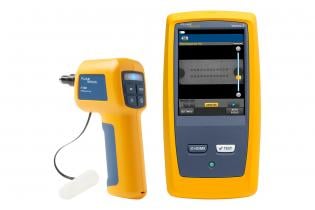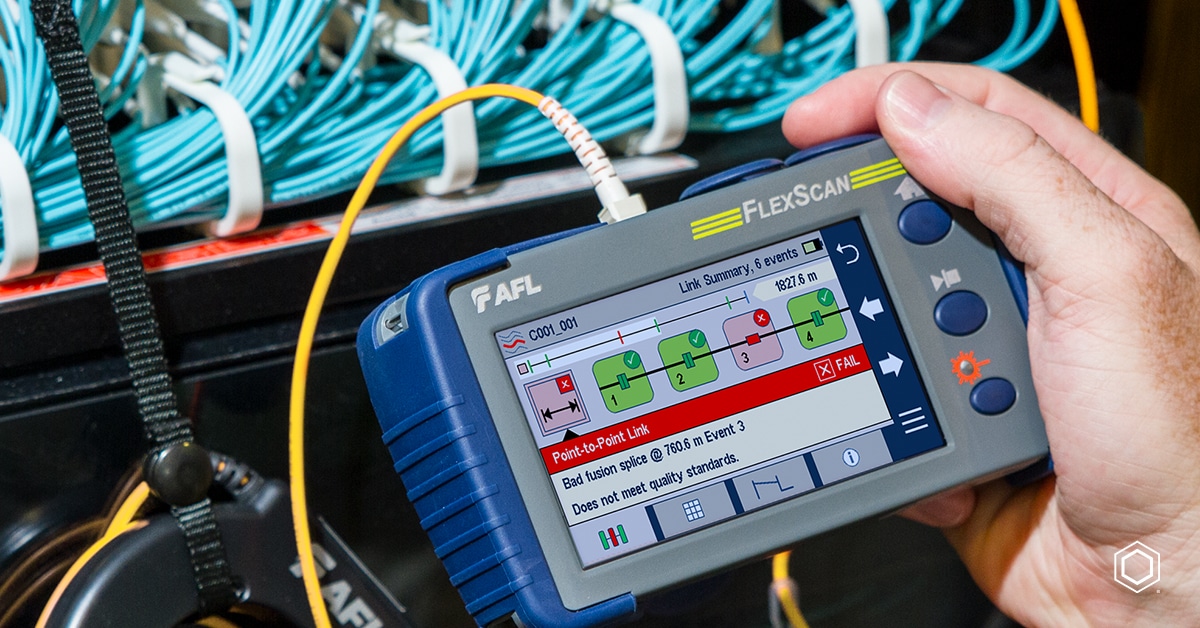The use of robotic vision delivers precision in production.
The use of robotic vision delivers precision in production.
Blog Article
Unveiling the Key Use Optical Fibre Evaluating for Reliable Information Transmission
In the realm of modern communication, optical fiber testing emerges as a vital technique for optimizing information transmission. By using approaches such as Optical Time Domain Reflectometry (OTDR) and insertion loss evaluations, network drivers can efficiently determine and deal with issues that might jeopardize signal honesty. As the demand for faster and more trusted connections remains to rise, the implications of these screening methods extend past instant mistake detection, influencing lasting network efficiency. Understanding the diverse applications of optical fiber testing invites a much deeper exploration right into its crucial role fit the future of information communication.

Significance of Optical Fibre Testing
The significance of optical fiber screening can not be overstated, as it acts as an essential component in making sure the integrity and effectiveness of information transmission systems. In a period where high-speed communication is paramount, any kind of shortages in fibre optics can lead to considerable data loss and reduced performance. Extensive testing protocols are important to confirm the stability and performance of optical cable televisions.
Testing permits the recognition of issues such as micro-bends, macrobends, and splice losses that can prevent signal top quality. Moreover, it supplies understandings right into the general attenuation and data transfer capabilities of the fiber, making certain that the network fulfills certain functional standards. Normal testing not just improves system performance yet also lengthens the life expectancy of the infrastructure by determining potential concerns before they escalate into expensive failings.

Kinds Of Optical Fiber Tests
Various sorts of optical fiber examinations are conducted to guarantee the efficiency and dependability of fiber optic networks. These tests can be categorized right into numerous key kinds, each serving a details function in analyzing the stability of the fibre.
First, Optical Time Domain Reflectometry (OTDR) is a prominent test that recognizes faults, entwines, and ports within the fibre. By sending out pulses of light and evaluating the shown signals, professionals can pinpoint problems along the fibre's length.
Second, insertion loss tests evaluate the amount of signal loss when light travel through adapters or splices, which is vital for preserving network performance.
Third, return loss examinations measure the quantity of light reflected back towards the source, supplying insights right into the high quality of connections and potential sources of disturbance.
Additionally, connection tests make sure that the fiber course is full, permitting professionals to confirm that the fibre is intact without any breaks. optical fibre testing equipment.
Finally, aesthetic fault locators utilize visible light to identify breaks or severe bends in the fibre, aiding in quick troubleshooting. Jointly, these examinations create a thorough method to maintaining optimal performance in fibre optic networks.

Applications in Network Upkeep
In modern-day telecoms, efficient network maintenance counts heavily on optical fiber testing to recognize and fix concerns quickly. Routine screening guarantees that the network informative post operates at optimum performance degrees, reducing downtime and improving customer experience.
One of the primary applications of optical fiber testing in maintenance is the detection of faults, such as breaks, bends, or incorrect connections. Strategies like Optical Time Domain Name Reflectometry (OTDR) enable specialists to find these issues properly and evaluate the top quality of the fibre web link. Furthermore, loss testing verifies the honesty of the optical course, making certain that signal attenuation remains within acceptable restrictions.
Regular maintenance screening likewise assists in safety nets, identifying possible problems before they escalate into significant failings. This proactive approach can save companies both time and funds. Additionally, throughout upgrades or developments, optical fiber screening makes sure that brand-new installations incorporate effortlessly with existing facilities.
Enhancing Data Transmission Dependability
Reliable network maintenance with optical fiber screening not only addresses instant concerns however also plays a considerable role in enhancing data transmission dependability. By recognizing faults, determining signal loss, and assessing the overall condition of fibre optic cable televisions, screening guarantees that possible issues are corrected before they escalate into substantial disruptions.
Regular optical fiber testing, such as time-domain reflectometry (TDR) and optical time-domain reflectometry (OTDR), enables specialists to identify the precise locations of breaks, bends, or port concerns within the network. This aggressive method not just reduces downtime however additionally maximizes the efficiency of information transmission by guaranteeing that the paths for signals are clear and operating effectively.
Moreover, testing aids in verifying adherence to industry standards and requirements, which is critical for preserving the stability of information flow. By guaranteeing that each connection meets called for thresholds see page for loss and quality, organizations can boost their self-confidence in the dependability of their information networks.
Eventually, spending in thorough optical fiber testing not just enhances data transmission reliability yet also sustains the long-lasting functional performance of communication frameworks.
Future Fads in Fiber Testing
Arising modern site link technologies are poised to transform fibre testing, paving the method for boosted effectiveness and accuracy in information transmission diagnostics (ofda). As the need for faster web and higher transmission capacity remains to rise, the assimilation of sophisticated devices such as synthetic knowledge (AI) and artificial intelligence (ML) is readied to transform conventional fiber screening approaches. These innovations will make it possible for predictive maintenance and automated fault discovery, substantially decreasing downtime and improving network dependability
Furthermore, the adoption of Internet of Things (IoT) tools will facilitate real-time tracking of fiber networks, permitting immediate identification of efficiency issues. This shift towards positive administration will reduce interruptions and enhance information flow.
In addition, advancements in optical time-domain reflectometry (OTDR) and brand-new testing criteria will improve the precision of measurements, ensuring that information integrity is kept throughout the transmission process. The development of 5G technology likewise demands the growth of extra advanced fibre testing techniques to sustain its high-speed needs.
Conclusion
In final thought, optical fiber screening is necessary for keeping reliable information transmission within communication networks. Regular testing not only guarantees compliance with industry standards however additionally assists in proactive maintenance, ultimately adding to the lasting dependability and efficiency of fibre optic systems.
Report this page